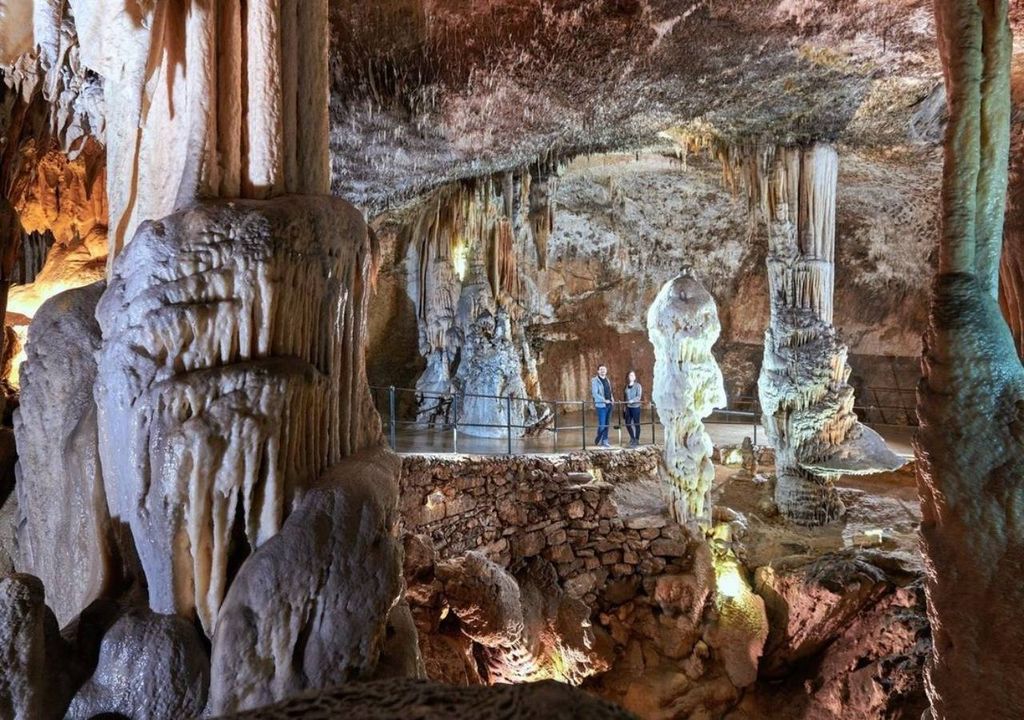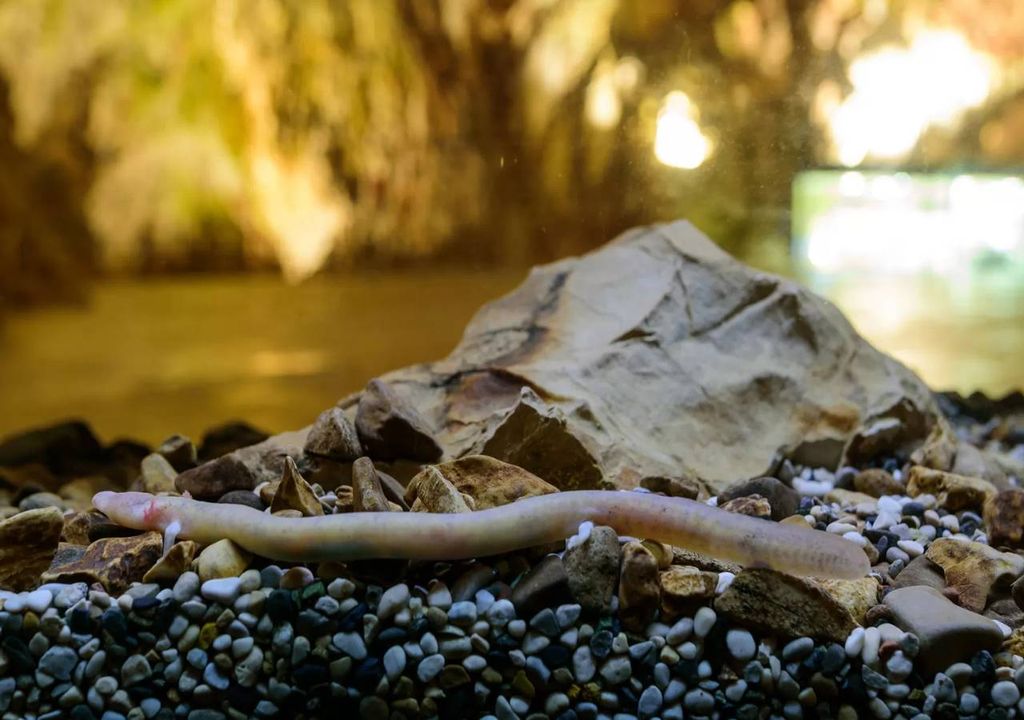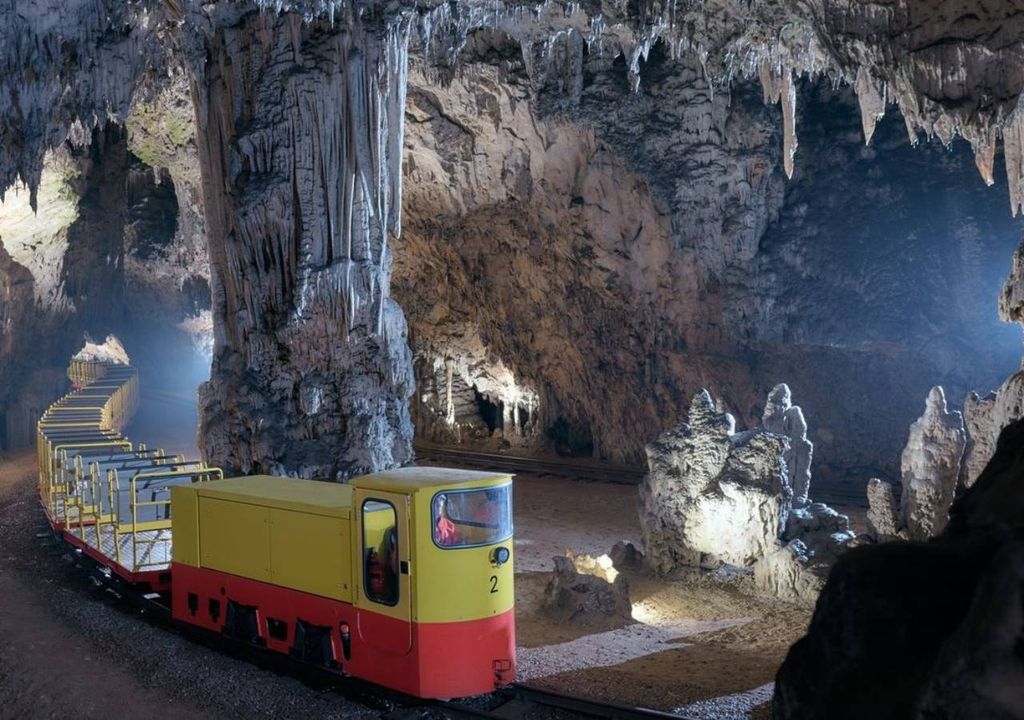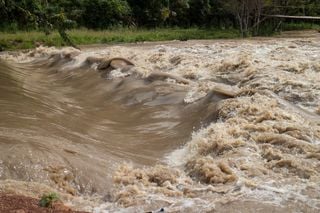Baby dragons don't just exist in fiction: Find out where you can find them
Blind and vertebrate creatures, glowing undergrounds and mysterious tunnels. Postojna Cave is one of the most impressive in the karst region and a true underground paradise that was formed over millions of years.

In recent years, fictional dragons have gained fame thanks to series such as “Game of Thrones” and its prequel, “House of the Dragon”. However, there is one place where long-tailed creatures are real — and it's closer than you think. In Slovenia, animals known as olms (Proteus anguinus) inhabit the limestone caves of Postojna, creating a kind of magical and mysterious setting, which also serves as proof of resilient life.
These aquatic amphibians, also called "baby dragons", are almost translucent, eyeless and endowed with surprising abilities, such as limb regeneration and an impressive longevity of up to a hundred years.
“The Postojna Caves are the only place where you can see the most precious gem in the form of a cave system and also meet baby dragons. Just like the world above the surface, they boast towering mountains, murmuring rivers and vast underground rooms”, reads the official website.
It is no coincidence, therefore, that many say that exploring the interior of Postojna is like entering an underground world of wonders. The best thing is that it works like a kind of amusement park, complete with a train ride and everything.
The largest cave in Europe
As many caves as Slovenia has, none are like Postojna. In fact, its 24 kilometres in length make it the largest in Europe — being included in the Guinness World Records. However, don't start making plans to visit the cave in its entirety just yet. Despite its size, only five kilometres are open to the public — but we guarantee that it will be five very special kilometres.

Imagine having to get on a train to see this part of the karst world. This is exactly what you will have to do, as 3.7 kilometres are covered by a locomotive. The rest are done on foot.
When will the baby dragons part arrive? After getting to know the geological system of rocks where water dissolves rocky milk, and even passing by the huge 5 metre high white stalagmite, known as “Brilhante”.
Baby dragons are the cave's main attraction
The real adrenaline rush is reserved for the moment you come face to face with the eccentric creatures found in the Postojna cave system.
Among the crickets, millipedes (diplopods) and beetles, baby dragons rule what is considered the cave with the greatest biological diversity in the world. Officially known as Proteus, these animals have adaptive characteristics that are nothing short of legendary — even without wings and fire. “This is the closest thing I’ve ever seen to a dragon,” said Postojna biologist Katarina Kanduč, quoted by ‘National Geographic.

For centuries, these eyeless elms, which occasionally appeared due to rising waters, were considered descendants of dragons that supposedly hid in the caves of Slovenia. Even now, they remain mysterious, classified as vulnerable by the International Union for Conservation of Nature (IUCN) due to a lack of data.
Scientists even struggle to determine how many reliably live in their small territory of Dinaric karst that stretches along the Adriatic coast from northern Italy to Albania. But, in the Postojna cave, they found a living museum, where they can study the small creatures.
The most visited tourist cave in Europe
More than 40 million people a year pass through the cave, located less than an hour from the capital, Ljubljana. Postojna was discovered in the 13th century, after millions of years of slow development, as it only grew by one millimetre in a decade. “The monument was only properly explored in the 19th century, when Luka Cec was supervising the area for the visit of Emperor Francis I of Austria, in 1818”, reveals ‘NiT’ magazine.
A year later it was opened to tourists. If, in the past, the path was covered with torches and carts, carried by people, everything changed in 1872, the year in which the train was inaugurated. This was actually the first railway built in a cave.
Here, the highest formations reach 16 metres in height. The most impressive thing is that some of the stalactites resemble the Tower of Pisa or animal figures, such as chickens. Inside it is also possible to find the Calvary, a vast underground hall with more than 160 thousand cubic metres.

In addition to exploring the cave, we suggest you enter “the world of fairytale knights”: Predjama castle, the largest in the world carved into the rock of a cave.
The fortress, located a few kilometres from the cave, belonged to Baron Erasmus Luegger, the “Robin Hood” of Slovakia, who stole from the rich and distributed it to the poor.
The medieval castle was built in the middle of a 120 metre high cliff and is considered one of the most fascinating in the world, as it hides a network of secret tunnels.
To visit both attractions, you can find tickets for €45.50 on the website. If you prefer to visit just the caves, the cost is €32.








